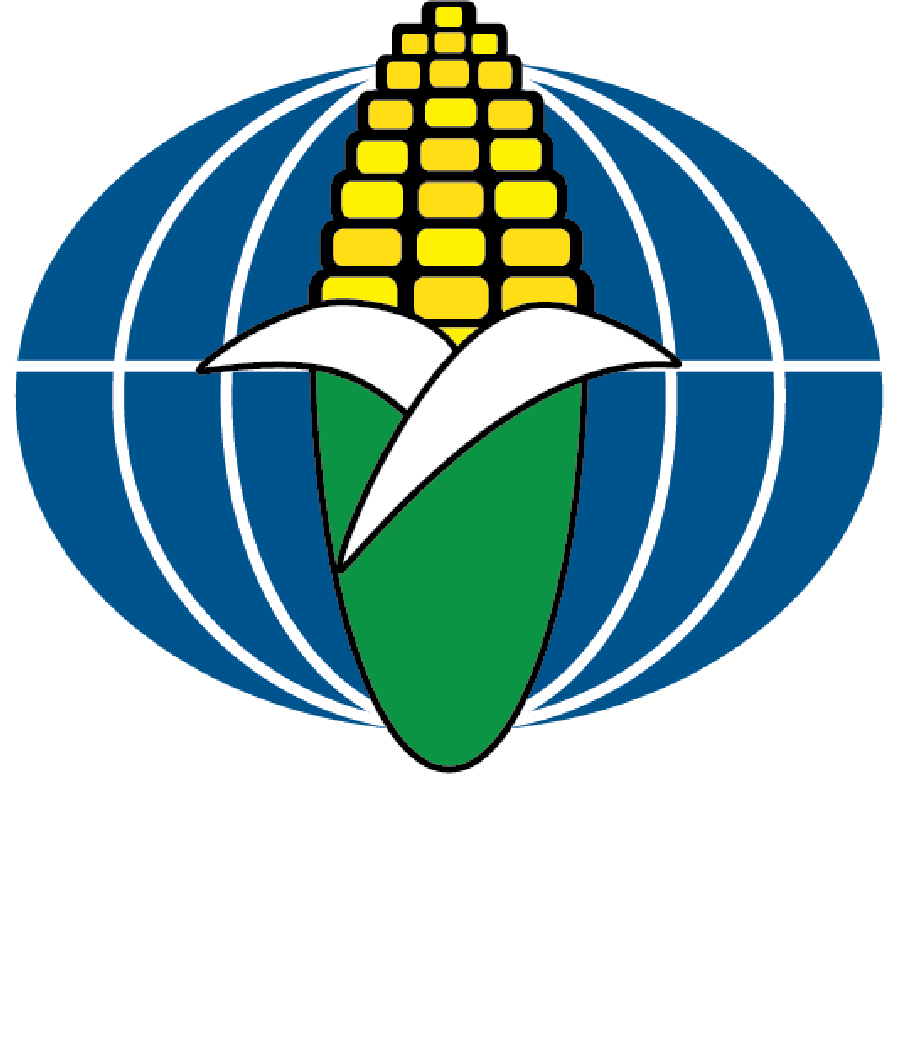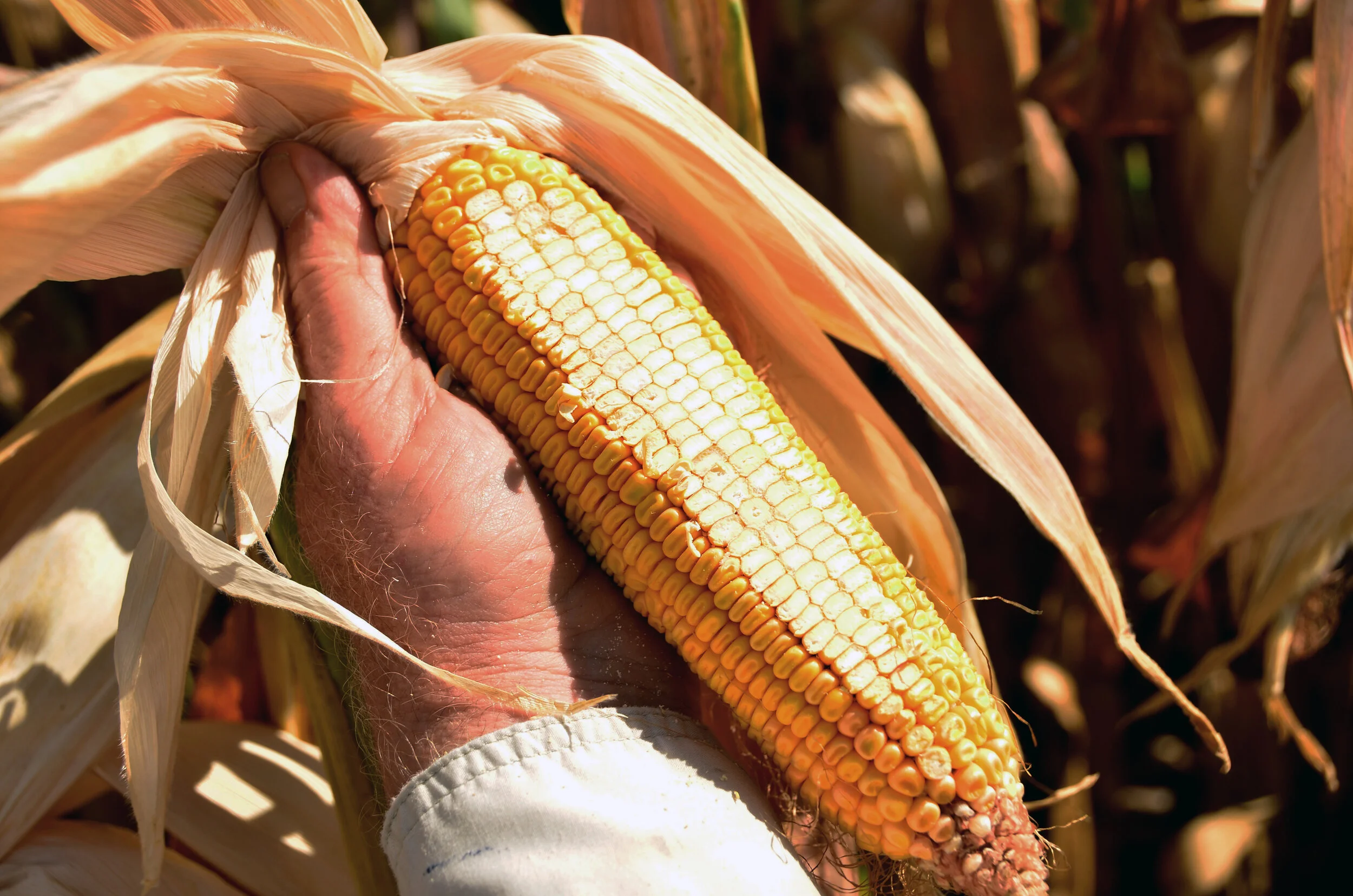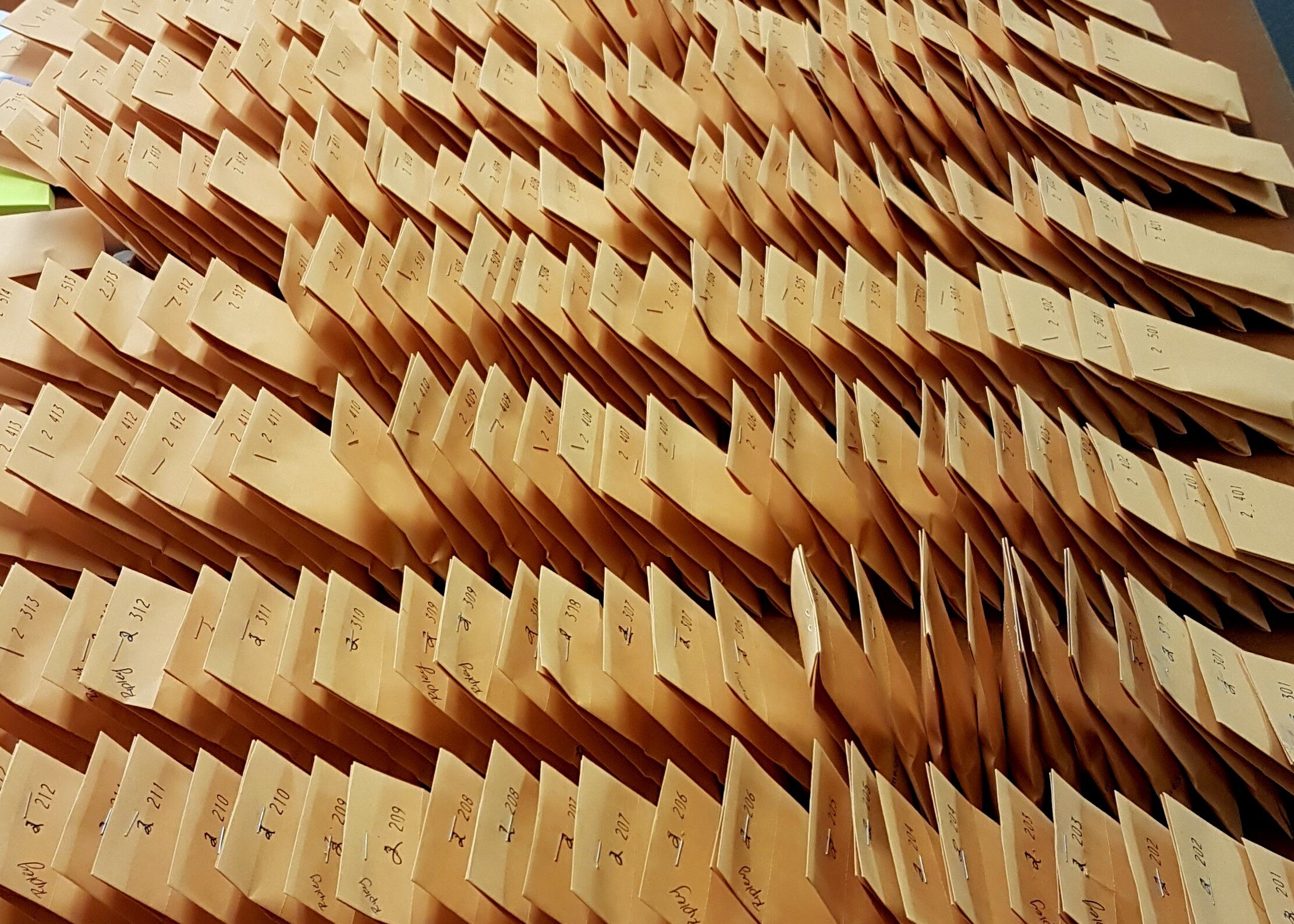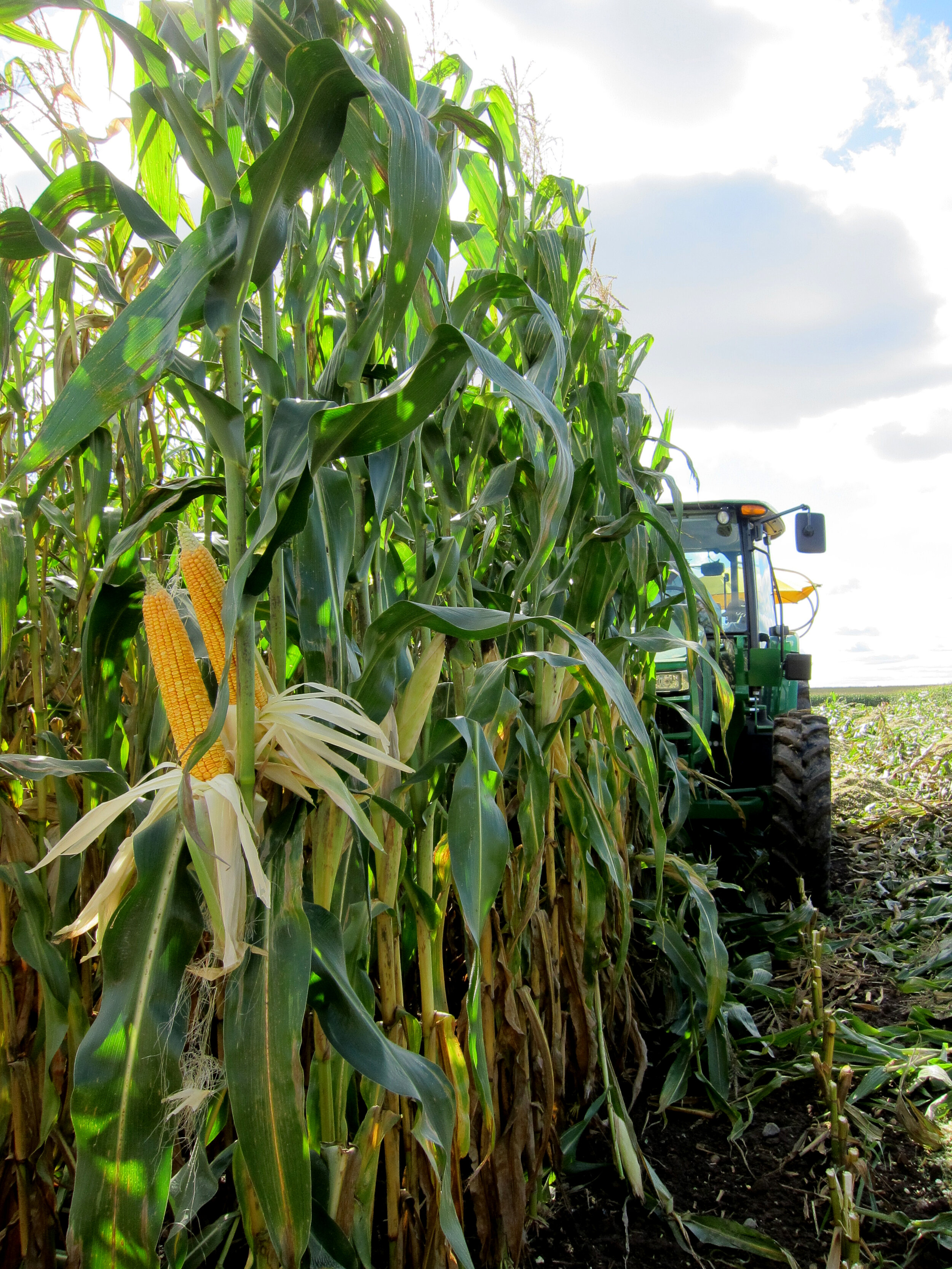Spring is approaching, and at Glenn Seed this is marked by the temporary congregation of thousands of meticulously organized numbered yellow envelopes – each hand-filled with a precise number of corn kernels and placed into planting order. These envelopes represent much of our winter’s work -- the data analysis from the previous year’s silage trials, the experimental crossing work that we did in our Chile winter nursery in January and in our Canadian summer nursery last July. In truth, they are the culmination of the company’s 35 years of silage breeding work -- our latest and greatest corn silage hybrid combinations, or so we think. They’re set to be planted across seven experimental yield trial locations in Ontario, and by fall we’ll see what they’re made of.
The sense of potential that exudes from the delicate golden rows is palpable, and perhaps more so this year than any year before. This season marks the first big wave of pre-commercial hybrid testing for a wide range of Full Floury Leafy Corn Silage Hybrids, and they’ve been a long time coming!
It has been 19 years since Dr. Francis Glenn discovered a corn plant in his corn research nursery that presented an exciting natural mutation - kernels that had completely floury endosperms. To most corn breeders, this kernel type may have seemed novel but would have been discarded in a hurry. A floury kernel would be far too fragile to endure the commercial grain process. For Dr. Glenn, however, it was a breakthrough. His breeding focus was on developing high-yielding silage-specific corn hybrids for livestock feed that had increased digestibility and ideal silage agronomics. At that time he had already established a business around the breeding of Leafy Corn Silage Hybrids. The promise of integrating a floury kernel type into his Leafy germplasm was a game-changer. These kernels would break-up more easily in the chopper and during cow chewing, and the starch would behave differently in the rumen. They could change the way the industry regarded starch digestibility –which was presumed to be a constant in corn silage products at the time.
In short order, Dr. Glenn identified that the gene controlling the expression of the floury kernel type was a naturally occurring recessive gene called opaque-1. Unfortunately, the recessive nature of this gene would slow his breeding work, increasing the number of plant generations required to integrate the gene into his breeding material. But Dr. Glenn made the commitment – within 6 years, he was able to introduce the first Floury Leafy Corn Silage Hybrids to the marketplace. These hybrids produced an average 25% of the kernels on each ear with completely floury endosperms. The remaining 75% had the kernel type of a silage-specific Leafy – kernels that he had bred to have a larger proportion of floury starch than the industry standard. He had also selected his regular Leafies to have kernels that were large, flat and slow-drying in order to increase their ease of breakability and to extend the silage harvest window. His long-game vision, however was to integrate the opaque-1 gene into both parents of the hybrid in order to create products with 100% floury kernels. That day has finally come.
An ear of a Full Floury Leafy at silage maturity that is shaved to reveal the floury interiors of the kernels.
Last season we tested about 650 experimental hybrids, and about 125 of them were Full Floury Leafies. Most of these hybrids were in first year trials. Only about 10% of new experimentals will advance to second year trials, and perhaps 3-4% to third year trials. This is to say that of the approximately 650 new hybrids that we test each year, only a few of them will ever get our nod of approval and be distributed to our customers for testing in their sales areas.
Part of a Glenn corn silage yield trial. One plot is composed of three short rows.
During the three years of testing, each hybrid that progresses is rigorously evaluated in a range of environments. We have developed and adapted our own silage hybrid testing program. Our evaluation methods are tailored to evaluate and advance hybrids which meet our vision of the ideal silage hybrid. The silage hybrids that make their way to the marketplace from our breeding and testing program must stand the rigors of each season at multiple locations and produce a high yield of high quality forage. They must demonstrate a wide silage harvest window in which the ear and total plant dry slowly after reaching silage maturity. Their kernels should be large, flat and slow drying, allowing them to be easily broken in the silage processing system.
Each replicated plot consists of three rows. We chop only the center row so that it is surrounded by itself, making the test plot most like a silage production field. The silage product is evaluated with an onboard NIR that is activated in the middle of the row to evaluate fully competitive plants. The NIR generates data on dry matter yield, starch content, NDF content and digestibility, protein and moisture content. We also conduct a visual analysis of each plot and give a score for stay green and root strength, among other plant characteristics.
Experimental Full Floury Leafy at silage harvest stage
Glenn silage plot at harvest
Glenn research chopper
For now, the snow is falling, buying us preparation time as the seed counting continues and the golden envelopes multiply. With luck, by fall we’ll be able to identify the first wave of commercial Full Floury Leafy Corn Silage Hybrids and be prepared to distribute them to our seed company customers for testing in 2021.
-by Margo Lee







